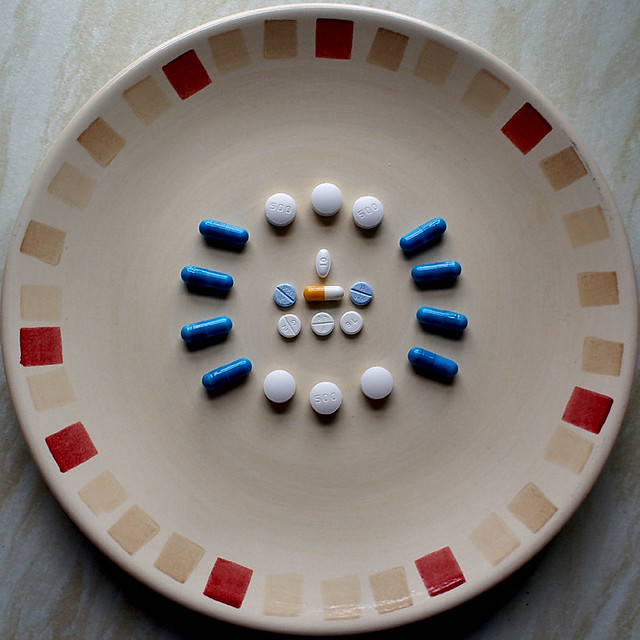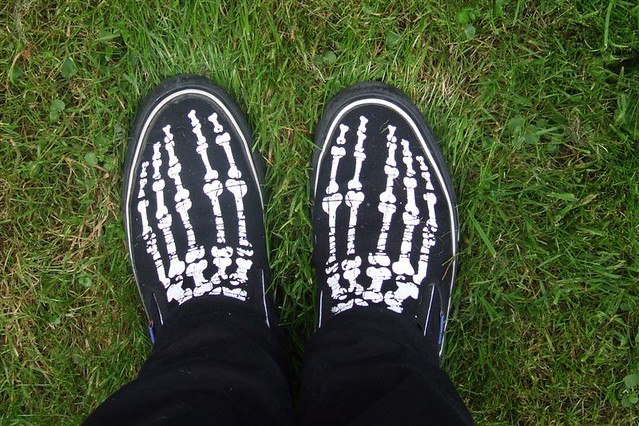 (Image by Barry used under CC.20 via)
(Image by Barry used under CC.20 via)
At the beginning of this year, I underwent orthopedic surgery and rare complications immediately arose from it, causing me to take three months of sick leave. In that time, both my country of origin and my country of residence experienced outbreaks of measles that have set the Internet ablaze with raging arguments about medicine, personal choice and the greater good. While the critics of Big Pharma have plenty of good points, recent studies of Big Herba—which is unregulated in the U.S.—have debunked an array of flaws that can be deadly. Glossing over the vitriol, at the crux of the matter lies a very reasonable question: When it comes to health, who should you trust?
“Trust to your doctor” sounds simple enough until we consider the many instances throughout history when medical professionals have abused this trust, particularly in regard to minorities. Health organizations around the world classified gay people as mentally ill as late as 2001. A panelist on Larry Wilmore’s The Nightly Show last month cited the Tuskegee syphilis experiment, which treated African-American men like lab rates from 1932 to 1972, as the basis for his overarching distrust of government health organizations. Investigations recently revealed that the U.S. Public Health Service committed similar crimes against mental patients and inmates in Guatemala in the 1940s. The polio vaccine, which has saved millions of lives globally, was first tested on physically and mentally disabled children living in asylums and orphanages. Researchers advocated the forced sterilization of trans people and ethnic minorities as recently as 2012. And of course there were the Nazis and the many, many scientists before them who passionately promoted eugenics. ITV recently rebroadcast a documentary hosted by Warwick Davis detailing Dr. Mengele’s horrific experiments on dwarfs at Auschwitz.
In other words, minorities don’t have to dig too deep to come up with plenty of reasons to be wary of scientists and doctors. Regulation, transparency and a never-ending, highly public debate on bio-ethics and human rights are necessary to prevent such crimes from happening again.
But an ideological opposition to all doctors based on such abuses ignores the myriad successes. A Slate article appearing last fall, “Why Are You Not Dead Yet?” catalogs the thousands of reasons so many of us are living so much longer than our ancestors did—from appendectomies to EpiPens to everyday medications—which we so often overlook because we have come to take the enormous medical advances of the past 200 years for granted.
And yet, as so many scientists are only too ready to admit, science does not know everything. Almost no medical procedure can be guaranteed to be risk-free, and many people base their distrust of doctors on this fact. My current post-surgical complications were just cited to me by an acquaintance as reason enough for why I never should have had the operation at all and instead gone to a TCM healer.
In my 33 years I have undergone 14 surgeries, physical therapy, hydrotherapy, occupational therapy, electro-muscular stimulation therapy, and the list of medications I’ve taken undoubtedly exceeds a hundred. I have also been treated with reiki, shiatsu, osteopathy, acupuncture, massage, prayer, and herbal remedies based on macrobiotic, homeopathic and detox theories. Some of these treatments I chose as an adult, and some of them were chosen for me by adults when I was a child and a teen. Some of the medical treatments worked, some didn’t, and some caused new problems. Some of the alternative treatments rid me of lingering pain, and some were a complete waste of time, money and energy as my condition worsened. I won’t ever advocate any specific treatment on this blog because my readership is undoubtedly diverse and the risk of making inaccurate generalizations is too great.
Indeed, a grave problem in the public debate on health is the frequent failure to acknowledge human diversity. Most health advice found online, in the media, at the gym or a healing center is geared not at minorities but physiotypical people, who are seeking the best way to lower their risk for heart disease, fit into their old jeans, to train for a marathon, or to simply feel better. They are not seeking the best way to be able to walk to the corner or have enough strength to shop for more than half an hour. Those in the health industry who endorse one-size-fits-all solutions—“We just need to jog/Start tai-chi/Eat beans, and all our troubles will go away!”—rarely address minority cases that prove to be the exception to their rule. But atypical bodies have just as much to teach us about our health as typical bodies, and leaving them out of the conversation benefits no one but those seeking to profit off easy answers.
When it comes to seeking treatment for my condition, I follow a simple rubric: I don’t want to be the smartest person in the room. I have no professional training in medicine or anatomy. As this physician explains so well, self-diagnosis is a very dangerous game. Yet I sometimes am the expert on my body thanks to the relative scarcity of people with achondroplasia—there are only 250,000 of us on earth, or 0.00004% of the world population—compounded with the scarcity of people with achondroplasia who have undergone limb-lengthening and sustained bilateral injuries to the anterior tibialis tendons. A visit to a healing center or a hospital often entails conversations like these:
Shiatsu Healer: You’re walking with a sway-back. Your wood energy is obviously misaligned because you are stressed.
Me: My hips sway when I walk because the ball-and-socket joint in the hip is shaped instead like an egg-and-socket in people with achondroplasia.
***
Physical Therapist: Your hips sway when you walk because one leg is obviously longer than the other.
Me: No, I have my orthopedist’s report documenting that my legs are precisely the same length. My hips sway when I walk because the ball-and-socket joint in the hip is shaped instead like an egg-and-socket in people with achondroplasia.
***
Nurse: Your temperature is pretty high. I’m a bit worried.
Me: These anesthesiology guidelines I got from the Federal Association for Short-Statured People say that hyperthermia is to be expected post-op in patients with achondroplasia.
Sometimes the information I offer goes unheeded. In both the U.S. and in Germany, I have found arrogance is equally common among doctors and healers. Some of them are delightfully approachable, and others are so socially off-putting that they make you want to throw your wheelchair at them. The same arrogance, however, can take different forms. I have documented before the particular brand of pomposity so endemic to doctors, and it is safe to say that holistic healers are less likely to treat their patients like products on an assembly line because, by definition, they are more likely to take psychological well-being into account. But they are also more likely to endorse a one-size-fits-all solution for health, which invariably marginalizes minorities like me.
Those of us with extremely rare conditions are far more likely to find specialists among those licensed in medicine than among alternative healers. Living Naturally, the only website on alternative treatments I could find that even mentions achondroplasia, emphasizes that none of the therapies they suggest for achondroplasia have ever been tested on patients who have it. To be fair, rare conditions by definition are not well-known to your average GP either. But physicians more often know how to work with the facts, embracing the medical literature on achondroplasia I hand to them. Some alternative healers also embrace such literature, while others dismiss anything written by anyone in a white coat.
Even when a visceral hatred of hospitals and their hosts is irrational, it is understandable. My most recent stay involved some of the kindest medical professionals I have ever encountered but nevertheless left me waiting for two and a half hours on a metal bench with no back support in a hallway glaring with fluorescent lights and echoing with the cries of patients in pain. I respect everyone’s right to opt against surgery, or any medical treatment, as long as their condition does not cause others harm. But no matter how much modern medicine has abused minorities’ trust, disabled people are the only minority that cannot afford to forgo it.
A worldwide study presented to Little People of America found that, at this point in history, dwarfs have a higher quality of life—i.e., access to effective health care, employment opportunities, acceptance in society—in Northern Europe than anywhere else on earth. Reductive arguments that demonize all of Western medicine because the Nazis! can be canceled out by reductive arguments that dismiss anything developed outside the West because Asia’s terrible disabled rights record!
Broad generalizations like “Natural is better” can only be upheld by those ensconced in the privileges of a non-disabled body. In 2011, the parenting website Offbeat Families banned the term “natural birth”—urging writers to instead refer to “medicated” and “unmedicated” birth—because “natural” had so often been used to imply “healthier.” An unmedicated birth is wonderful for anyone who can and wants to experience it, but it is important to remember that it is a privilege. A privilege, like a disability, is neither your fault nor your achievement.
“Healthy” is a relative idea. Our choices about our bodies will always be limited. This is a sometimes terrifying fact to face. But in the public debate, we must remember that it is a fact those among us with rare disabilities and conditions can never avoid. In failing to remember it, we fail to make decisions about human health that are truly informed.
Tags: Achondroplasia, Disability, Healers, health, medicine, Minorities, Privilege, Surgery












